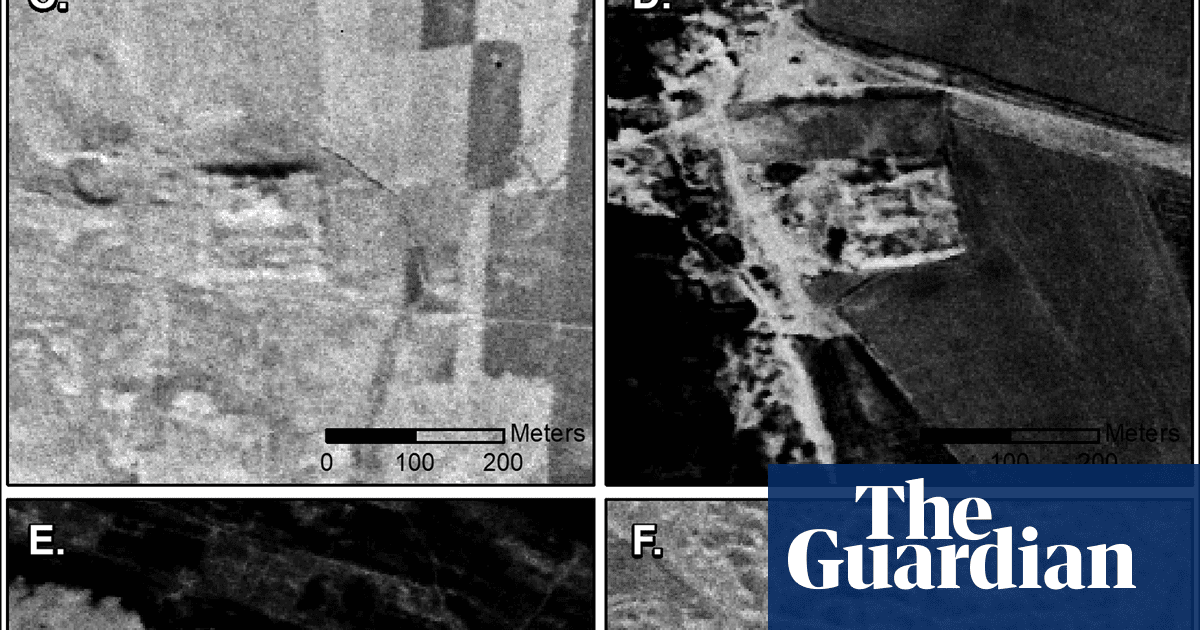
Experts have stated that recently released images from a cold-war spy satellite have shed new insight on the operations of the Roman empire. These images have uncovered numerous forts that were previously unknown, leading to significant implications for our knowledge of the empire.
After analyzing aerial images from the 1960s and 70s, archaeologists have identified 396 previously undiscovered Roman forts in Syria and Iraq situated throughout the Syrian steppe.
The discoveries, released today in Antiquity, a global scholarly journal on archaeology, have prompted a reassessment of living conditions at the Roman border.
In 1934, Antoine Poidebard, a French Jesuit explorer who was a pioneer in the field of aerial archeology in the Middle East, conducted a survey of the region. He used his bi-plane and documented a total of 116 forts.
Previously, historians believed that these forts were constructed as a defensive barrier to shield the eastern region of the empire from attacks by Arab and Persian forces, as well as raids from nomadic tribes seeking to capture slaves.
According to the authors, recent findings suggest that the frontier was not characterized by persistent violent conflict, but rather was a dynamic and lively hub of cross-border commerce. The forts played a role in facilitating a network of trade, communication, and military transportation through caravans.
The statement from the writers prompts the inquiry, “Was it a wall or a road?”
According to Prof. Jesse Casana from Dartmouth College, USA, there has been ongoing discussion among historians and archeologists since the 1930s about the purpose behind the fortifications system. While some have questioned its strategic or political significance, the observation made by Poidebard about a line of forts marking the eastern boundary of the Roman empire has rarely been challenged.
The 396 new sites, hidden by modern-day development, are widely distributed across the region from east to west, which does not support the argument that the forts constituted a north-south border wall.
Scientists now propose that the forts were built to aid in cross-border commerce, safeguarding caravans journeying between the eastern provinces and non-Roman regions, while also aiding in communication between the east and west.
The authors stated that this suggests the boundaries of the Roman empire were not as strictly defined and exclusive as previously thought.
The Romans were known for their focus on military affairs, but they also placed importance on commerce and maintaining connections with territories beyond their rule, according to sources.
The pictures analyzed were a part of the initial spy satellite project, which was carried out during a time of political strife between the United States and the Soviet Union and their respective allies in the Western and Eastern hemispheres.
Casana stated that these recordings maintain a detailed, two-dimensional view of a landscape that has been greatly affected by contemporary changes in land usage.
According to him, it demonstrated the true worth of satellite imagery in capturing archaeological structures before they disappear.
We were able to confidently identify only 38 out of the 116 forts documented by Poidebard. Furthermore, numerous potential Roman forts that we identified in this research have already been destroyed due to modern urban or agricultural development, and many others are in grave danger.
With the release of additional images, including those taken by the U2 spy plane, there is potential for even more archaeological findings. According to Casana, thorough examination of these valuable data has the ability to lead to significant discoveries in the near east and beyond.
Source: theguardian.com
















